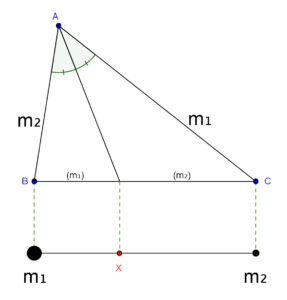Table of Contents
Introduction:
The center of mass is a very important property of any rigid body system. Generally, these systems include more than a single particle. It is necessary to analyze these systems as a whole. For the calculation of mechanics, these bodies must be considered as a single point mass. These points are denoted by the Center of mass. Sometimes the mechanical system moves in a rotatory manner. The Center of mass also moves and acquires some velocity and acceleration when the system moves in a rotatory manner. In this article let’s see such systems in detail.
If we have to determine the center of mass of a body through an experiment we can take the help of the gravity forces acting on the body. This has to be done initially since the center of mass is almost the same as that of the center of gravity in the parallel gravity field near the surface of the earth. In addition to this, the center of mass of a body with an axis of symmetry and constant density will be present on this axis. Similarly, the center of mass of a circular cylinder with a constant density will have its center of mass present on the axis of the cylinder. Due to the spherically symmetric body of constant density, the center of mass is at the center of the sphere.
A brief outline of the topic:
The center of mass:
So many problems can be solved if it is assumed that the mass of the object is present at one particular point. If successfully the correct position is chosen then the equations of the forces and motion behave the same way as they behave when applied at mass is spread out. This particular location is known as the center of mass of that particular location.
The position of this can be described as the relative to an object or the system of the objects whose center of mass is to be calculated. Generally for uniform shapes, it is their centroid. For the shapes that are symmetrical and uniform their center of mass is present at their centroid. For a ring, its center of mass is present inside the ring which means it is not necessary that the Center of mass of a body is always present in the body itself.
The center of Gravity:
Generally, gravity is assumed to be the uniform force that is on the body. The Center of gravity is the point at which gravity is assumed to be acting on the body. Therefore the center of gravity is almost at the same place as that of the center of mass present. In physics, the terms the center of gravity and the center of mass are used interchangeably since they mean the same thing.

A brief note of important concepts and laws:
The center of mass of the system of a particle can be described as a point at which the whole mass of the body appears to be concentrated. In physics, the center of mass can be defined as the point at the center of the distribution of mass in space whereas in the weighted relative position of the distributed mass has a total sum of zero. Simply the center of mass is a position that is relative to an object. We can also say that it is the average position of all the parts of the system or it can be the mean location of a distribution of mass in any space. The center of mass is a point where force is usually applied which results in the linear acceleration without having any angular acceleration.
We don’t have to worry about the dynamics of the individual particles of the system when we study the dynamics of the motion of the system of a particle as a whole. In such a case we only have to focus on the dynamic of a unique point corresponding to that system.
The system of Particles:
The system of particles can be described as a well-defined collection of a large number of particles that may or may not interact with each other or can be connected to each other. They can be the actual particles of rigid bodies in translational motion. The particle which interacts with each other also applies some amount of force on each other. These internal forces always exist in pairs of equal magnitude and opposite directions. Other than this internal force the external force can also act on all or some of the particles. Here the external force means a force that is acting on anyone particle and which is included in the system by some other body that is present outside the system.
FAQs (Frequently Asked Questions):
Question: Does the center of mass change with the movement?
Answer: The velocity or the movement of the center of mass of the system does not change as long as the system is a closed system. The system moves as if all the mass is concentrated at a single point.
Question: Enlist the factors which affect the center of mass.
Answer: The factors that affect the center of mass are as follows:
- The position of the mass on the axis.
- The total mass of the rigid body.
- The axis of the system.
- The distribution of the mass.
Question: Is it possible that the center of mass can be present outside an object?
Answer: Yes sometimes the center of mass may be present outside the physical body, especially in hollow or open-shaped objects such as a horseshoe.





